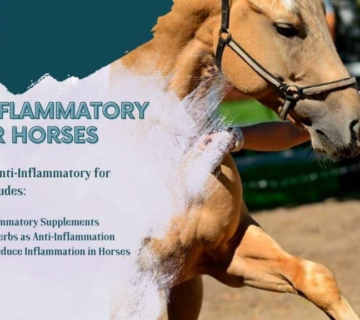This page contains information on Banamine Injection veterinary use.
- Banamine Injectable Solution Indications
- Warnings and cautions for Banamine Injectable Solution
- Direction and dosage information for Banamine Injectable Solution
This medicine can be use for the following animals
Product Information
Approved by FDA under NADA # 101-479
(flunixin meglumine injection)
50 mg/mL
Only for Intravenous Use in Beef and Dairy Cattle. Not for Use in Dry Dairy Cows and Veal Calves. For Intravenous and Intramuscular Use in Horses.
Banamine Injectable Solution circumspection
Federal law restricts this drug to use by or on the order of a licensed veterinarian.
Banamine Injection veterinary use Description
Each milliliter of BANAMINE (flunixin meglumine injection) contains 50 mg flunixin (equivalent to 83 mg flunixin meglumine), 0.1 mg edetate disodium, 2.5 mg sodium formaldehyde sulfoxylate, 4.0 mg diethanolamine, 207.2 mg propylene glycol; 5.0 mg phenol as preservative, hydrochloric acid, water for injection qs.
Pharmacology
Flunixin meglumine is a potent, non-narcotic, nonsteroidal, analgesic agent with anti-inflammatory and antipyretic activity. It is significantly more potent than pentazocine, meperidine, and codeine as an analgesic in the rat yeast paw test.
Horse: Flunixin is four times as potent on a mg-per-mg basis as phenylbutazone as measured by the reduction in lameness and swelling in the horse. Plasma half-life in horse serum is 1.6 hours following a single dose of 1.1 mg/kg. Measurable amounts are detectable in horse plasma at 8 hours postinjection.
Cattle: Flunixin meglumine is a weak acid (pKa=5.82)1 which exhibits a high degree of plasma protein binding (approximately 99%). However, free (unbound) drug appears to readily partition into body tissues (VSS predictions range from 297 to 782 mL/kg.Total body water is approximately equal to 570 mL/kg). In cattle, elimination occurs primarily through biliary excretion.7 This may, at least in part, explain the presence of multiple peaks in the blood concentration/time profile following IV administration.
In healthy cattle, total body clearance has been reported to range from 90 to 151 mL/kg/hr. These studies also report a large discrepancy between the volume of distribution at steady state (VSS) and the volume of distribution associated with the terminal elimination phase (Vβ). This discrepancy appears to be attributable to extended drug elimination from a deep compartment. The terminal half-life has been shown to vary from 3.14 to 8.12 hours.
Banamine Injection veterinary use Indications
Horse: BANAMINE (flunixin meglumine injection) is recommended for the alleviation of inflammation and pain associated with musculoskeletal disorders in the horse. It is also recommended for the alleviation of visceral pain associated with colic in the horse.
Cattle: BANAMINE (flunixin meglumine injection) is indicated for the control of pyrexia associated with bovine respiratory disease, endotoxemia and acute bovine mastitis. BANAMINE is also indicated for the control of inflammation in endotoxemia.
Dose And Administration
USE WITHIN 28 DAYS OF FIRST PUNCTURE AND PUNCTURE A MAXIMUM OF 10 TIMES. WHEN USING A DRAW-OFF SPIKE OR NEEDLE WITH BORE DIAMETER LARGER THAN 18 GAUGE, DISCARD ANY PRODUCT REMAINING IN THE VIAL IMMEDIATELY AFTER USE.
Horse: The recommended dose for musculoskeletal disorders is 0.5 mg per pound (1 mL/100 lbs) of body weight once daily. Treatment may be given by intravenous or intramuscular injection and repeated for up to 5 days. Studies show onset of activity is within 2 hours. Peak response occurs between 12 and 16 hours and duration of activity is 24-36 hours.
The recommended dose for the alleviation of pain associated with equine colic is 0.5 mg per pound of body weight. Intravenous administration is recommended for prompt relief. Clinical studies show pain is alleviated in less than 15 minutes in many cases. Treatment may be repeated when signs of colic recur. During clinical studies approximately 10% of the horses required one or two additional treatments. The cause of colic should be determined and treated with concomitant therapy.
Cattle: The recommended dose for control of pyrexia associated with bovine respiratory disease and endotoxemia and control of inflammation in endotoxemia, is 1.1 to 2.2 mg/kg (0.5 to 1 mg/lb; 1 to 2 mL per 100 lbs) of body weight given by slow intravenous administration either once a day as a single dose or divided into two doses administered at 12-hour intervals for up to 3 days. The total daily dose should not exceed 2.2 mg/kg (1.0 mg/lb) of body weight. Avoid rapid intravenous administration of the drug.
The recommended dose for acute bovine mastitis is 2.2 mg/kg (1 mg/lb; 2 mL per 100 lbs) of body weight given once by intravenous administration.
Contraindications
Horse: There are no known contraindications to this drug when used as directed. Intra-arterial injection should be avoided. Horses inadvertently injected intra-arterially can show adverse reactions. Signs can be ataxia, incoordination, hyperventilation, hysteria, and muscle weakness. Signs are transient and disappear without antidotal medication within a few minutes. Do not use in horses showing hypersensitivity to flunixin meglumine. Buy premium Banamine Injection veterinary use from us.
Cattle: NSAIDs inhibit production of prostaglandins which are important in signaling the initiation of parturition. The use of flunixin can delay parturition and prolong labor which may increase the risk of stillbirth. Do not use BANAMINE (flunixin meglumine injection) within 48 hours of expected parturition. Do not use in animals showing hypersensitivity to flunixin meglumine. Use judiciously when renal impairment or gastric ulceration are suspected.
 |
RESIDUE WARNINGS: Cattle must not be slaughtered for human consumption within 4 days of the last treatment. Milk that has been taken during treatment and for 36 hours after the last treatment must not be used for food. Not for use in dry dairy cows. A withdrawal period has not been established for this product in preruminating calves. Do not use in calves to be processed for veal. Not for use in horses intended for food. Approved only for intravenous administration in cattle. Intramuscular administration has resulted in violative residues in the edible tissues of cattle sent to slaughter. |  |
PRECAUTIONS As a class, cyclo-oxygenase inhibitory NSAIDs may be associated with gastrointestinal and renal toxicity. Sensitivity to drug-associated adverse effects varies with the individual patient. Patients at greatest risk for renal toxicity are those that are dehydrated, on concomitant diuretic therapy, or those with renal, cardiovascular, and/or hepatic dysfunction.
Since many NSAIDs possess the potential to induce gastrointestinal ulceration, concomitant use of BANAMINE (flunixin meglumine injection) with other anti-inflammatory drugs, such as other NSAIDs and corticosteroids, should be avoided or closely monitored.
Horse: The effect of BANAMINE (flunixin meglumine injection) on pregnancy has not been determined. Studies to determine activity of BANAMINE when administered concomitantly with other drugs have not been conducted. Drug compatibility should be monitored closely in patients requiring adjunctive therapy.
Cattle: Do not use in bulls intended for breeding, as reproductive effects of BANAMINE (flunixin meglumine injection) in these classes of cattle have not been investigated. NSAIDs are known to have potential effects on both parturition (See Contraindications) and the estrous cycle. There may be a delay in the onset of estrus if flunixin is administered during the prostaglandin phase of the estrous cycle. NSAIDs are known to have the potential to delay parturition through a tocolytic effect. The use of NSAIDs in the immediate post-partum period may interfere with uterine involution and expulsion of fetal membranes. Cows should be monitored carefully for placental retention and metritis if BANAMINE is used within 24 hours after parturition.



No comment